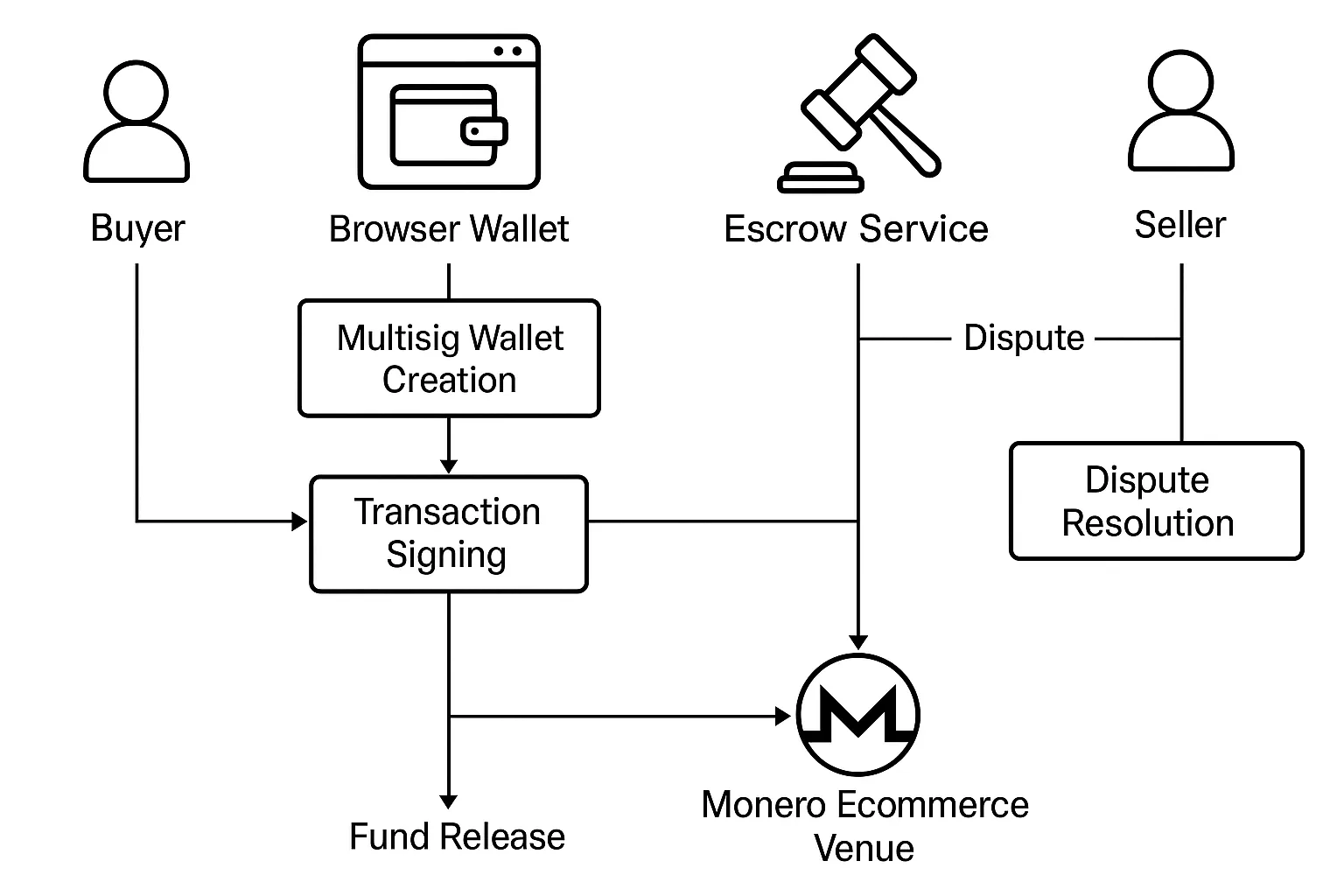
How the upcoming Monero Browser Wallet turns multi signature Escrow practical
There are far too many ways to lose Monero during an online shopping session. The countermeasure is to store escrowed funds inside multi signature wallets. It is seldom used, because it is hard to set up. Here is how the upcoming Monero Browser Wallet will change that.
For the longest time, Multisig has been viewed as a wallet feature. It is perceived as a tool to be used by a small number of people, and only in specific situations. For example this Monerokon talk discusses the implementation of an escrow system consisting of buyer, vendor and arbitrator. This system was never fully implemented and its complex nature lead to many caveats.
Serai’s multisignature protocol quietly redefines what multisig means for Monero. It is no longer just about shared ownership of funds among a small group of people. On Serai, hundreds of potentially misbehaving nodes share custody of Monero funds via multisig. The scrutiny that comes with that brings a resilience and flexibility that is still underappreciated. Its value goes beyond the exchange use case.
There is no law that says we can only use this multisig implementation to build exchanges. It is just as useful to enhance the Monero online shopping experience. With preprocessing, the setup process can be reduced to a single round. It is flexible. Think of serai nodes entering and leaving the network and what it means when applied to ecommerce: we can use the Browser Wallet to combine different services into one checkout flow.

Here is how this looks like in practice: A vendor can build his own shop and allow customers to select from a list of trusted escrow services. New types of venues can emerge that allow the composition, rating and discovery of escrow services and vendors. These Ecommerce Venues can fill the user experience role of a marketplace without falling into the trap of centralization.
Instead of being tied to one marketplace, that eventually grows too large and centralized, users and vendors can interact across an ecosystem of shops and services. This decentralization empowers individuals to choose the escrow and payment solutions that best fit their needs, leading to more innovation without the need to build custom wallet apps and networking protocols for every new service.
The modularization is driven by the Browser Wallet and the development of the underlying libraries. The groundwork was laid with the last CCS proposal, that lead to the creation of a wallet library that builds on the work of cuprate and serai. There is also some work done on a selfhostable payment links product that will be used to iterate on the wallet - webapp interaction.
The most crucial part is the exchange of ciphertext between the wallet and the webapp. Prompting the user to create new multisig wallets stored in the user controlled extension is another important piece of the puzzle. On the webapp side: preprocessing, participation in the DKG and possibly rotations are needed. The final step is proposing multisig transactions to the user and displaying plainly which parties are involved and what the results will be.
Consider supporting the CCS proposal if you want to see this move forward.